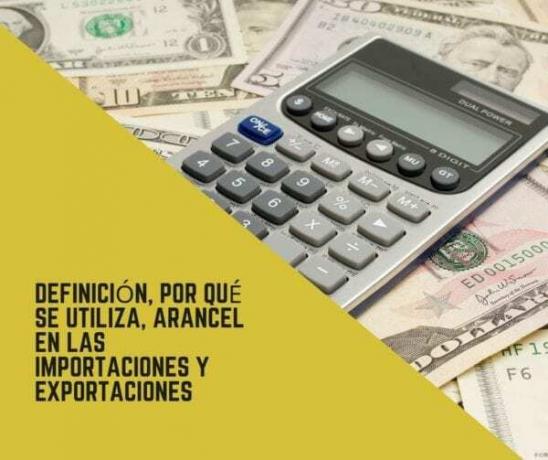The tariff, is a type of rate where customs duties transformed into a law are related. It is the official list of merchandise where certain taxes that must be carried out for imports and exports are classified.
This relationship has a classification of the products that are capable of being imported or exported. This classification can be done by product group so that later new items can be added.
Advertisements
Each product is identified with numbers first and then with its denomination. These tariffs are mostly implemented on imports in order to protect the state's businesses and workforce from foreign competition worldwide.
The main objective of a tariff in some nations is to increase rents or apply penalties for the policies that restrict the trade of other countries.
Advertisements

In this article you will find:
Why is a tariff used?
Originally its purpose was to incorporate funds into the Treasury, however, over the years it became in a primary economic policy tool to ensure employment and the stability of the sector Exterior. Due to that, it can be classified into two purposes which are:
Advertisements
Collection purpose
Being a tax, this fee is a source of revenue for the state. Therefore, as long as it is not too high to be eliminated with imports, it could provide higher public revenues.
Protective purpose
It refers to the tariff that tries to protect the industrial sectors of the state against global productive competition that generates lower prices than those produced domestically. In this case, national production is protected by incorporating a tax that has the same value as the foreign product and is thus less competitive.
Advertisements
In developed states the main purpose of this tax is to contain imports and divert domestic demand from imported products to those that are domestic so that they remain protected. This means that the national producer will be favored and the consumer will be harmed, since they will have to pay more for the same product.
Effects caused by a tariff
The tax imposed on a merchandise mostly increases its price, which causes a decrease in consumption of the foreign product and in turn, a reduction in imports. This benefits the new national industries, the formation of strategic trade and especially the protection of foreign trade.
Advertisements
For that reason, it is that exempt quotas are applied to exports, since what is sought is to promote the export of state products and reach the highest level within the market international. All of this causes a number of fundamental effects such as the ones mentioned below:
- Decrease in imports, consumption of products restricted by taxes and improvement of the commercial positioning of the states.
- It allows the reduction of foreign consumption.
- By reducing imports, the incorporation of national production benefits significantly. This means that taxes establish a subsidy in national industries so that their products can enter into competition with imported ones.
- The tax effect admits an increase in national collection and in essential products and thus tax collection will increase.
- It benefits the redistribution of income for both consumers and producers.
Tariff types
There are four types of tariffs, these are:
Compound
It refers to an ad valorem tariff that sets a minimum or maximum collection. It can also be a specific one that can be applied when an ad valorem does not reach the minimum or exceeds a maximum.
Specific
When the tax is imposed under the terms of charges or charges of specific currencies for each of the units of the product, this is carried out in a quantitative way and is applied mainly in imports. It is usually set according to the number of units that reach the importing state without being in accordance with the value of imports.
Mixed
It is applied with the ad valorem and specific tariff, therefore, it will charge an amount per unit adding to it the fixed percentage for the price of each product.
Ad valorem
It refers to a fixed percentage above the value of the product, agreed with the customs value, which can be both import and export. It is similar to a proportional tax where its value does not undergo modification in relation to its tax base. Despite this, if doubts arise from the authorities or there is mistrust of the value of the merchandise, various valuation methods could be applied.
This type of tax counteracts the state manufacturer's price disadvantage that is caused by the protection provided to them. to national suppliers of raw materials, in that case ad valorem provides protection to the industry when the products are finished.
Tariff on imports and exports
When taxes are applied to imports, they automatically increase the final cost of the products offered, thus encouraging the purchase of national products. In general, the application of taxes is supported in order to safeguard workers in the nation, new industries, to avoid trading partners and also protect consumers.
On the other hand, the least common tax is that of exports, since it is imposed on a national product or service that is going to be sold to another country. They are mostly imposed on countries that export primary products, either to increase income or In order to create scarcity in the markets globally, this will help increase the value of these products.
It is known as a tariff barrier to the imposition of these taxes, there are also the non-tariff barriers, which are those implemented with the intention of protecting industries from the condition.


